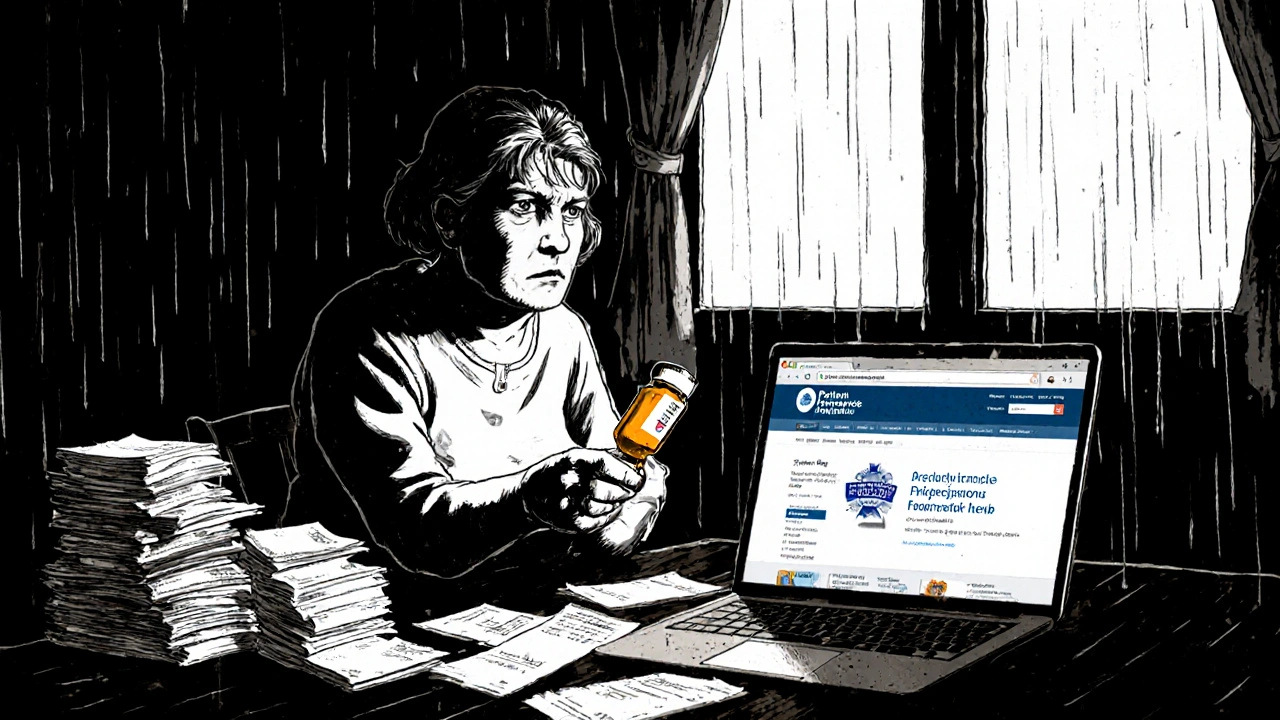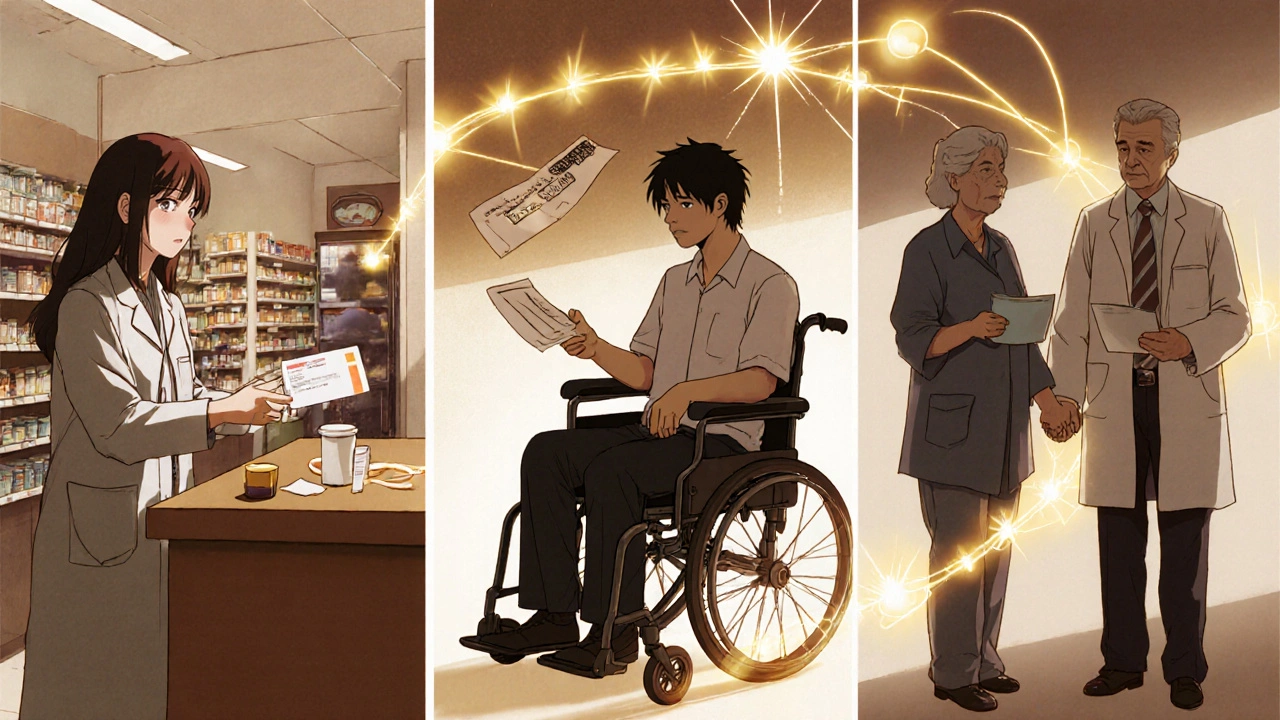How to Use Patient Advocacy Foundations for Medication Grants
 Nov, 21 2025
Nov, 21 2025
Getting the medicine you need shouldn’t mean choosing between rent and refills. For millions of Americans, high drug costs turn everyday prescriptions into impossible decisions. That’s where patient advocacy foundations come in. These nonprofits don’t just offer hope-they give real money to help people pay for life-saving medications. But knowing how to use them correctly makes all the difference.
What Patient Advocacy Foundations Actually Do
Patient advocacy foundations like the Patient Advocate Foundation (PAF) step in where insurance falls short. They’re not pharmaceutical companies. They’re independent nonprofits that collect donations and distribute grants directly to patients. Their main goal? Make sure no one skips a dose because they can’t afford it. PAF runs two main types of programs: Financial Aid Funds for uninsured or underinsured patients, and the Co-Pay Relief Program for people with commercial insurance. The Co-Pay Relief Program is especially important today. With high-deductible plans becoming the norm, even insured patients can face $500, $1,000, or more in out-of-pocket costs per month just for one drug. That’s where PAF steps in-paying the co-pay so you can get your pills. These grants aren’t loans. You don’t pay them back. They’re not charity in the traditional sense-they’re emergency funding designed to keep people in treatment.Who Qualifies for These Grants
Eligibility isn’t one-size-fits-all. It depends on which fund you’re applying for. But here’s what most require:- A confirmed diagnosis of a serious, chronic, or life-threatening condition
- Proof you’re actively receiving treatment-or will start within the next 60 days
- U.S. citizenship or permanent residency
- Treatment happening within the United States or a U.S. territory
How to Apply: Step-by-Step
Applying feels overwhelming, but it’s simpler than it looks. Here’s how to do it right:- Find the right fund. Go to patientadvocate.org and browse the list of available funds. Look for your condition-there are now over 40 disease-specific funds, including ones for Thyroid Eye Disease, Cystic Fibrosis, and Multiple Sclerosis.
- Gather documents. You’ll need your most recent tax return or pay stubs, proof of address, and a copy of your diagnosis letter from your doctor. For the Co-Pay Relief Program, you’ll also need a copy of your insurance card and a list of your prescribed medications.
- Get your doctor to help. Your provider must complete a form confirming your diagnosis, treatment plan, and that the medication is medically necessary. Don’t wait until the last minute-doctors are busy. Ask early.
- Submit your application. You can apply online at patientadvocate.org or call the dedicated number for your fund. For general help, call 1-800-532-5274. For Sepsis/ARDS/TSS, call 855-824-7941. For the Caregiver Support Fund, call 844-462-8072.
- Wait and follow up. Most decisions take 5-10 business days. If approved, the grant is sent directly to your pharmacy or caregiver-not to you. This ensures the money is used for medication only.
When Funds Run Out-And What to Do
Here’s the hard truth: these funds are donor-funded and run out. Fast. Some programs, like the one for Sepsis, open for applications only on the first business day of each month. If you miss it, you wait 30 days. That’s why timing matters. Apply early in the month. Don’t wait until the 25th. Set a calendar reminder for the first of every month. Check the fund’s status page on PAF’s website-some list how much money is left. If your fund is closed, don’t give up. Call PAF’s case management team. They can help you find other resources: state programs, manufacturer patient assistance programs (PAPs), or even local charities. Sometimes, switching to a different fund for the same condition can work-especially if you qualify under a broader category like “Rare Disease” or “Cancer.”How PAF Compares to Other Options
You might wonder: why not just use the drugmaker’s own patient assistance program? Many do. But here’s the catch:- Pharmaceutical PAPs only cover one drug from one company. If you take five different meds, you need five separate applications.
- PAF can help with multiple drugs from multiple manufacturers in one application.
- Pharmaceutical PAPs usually require you to be uninsured. PAF’s Co-Pay Relief Program is built for the underinsured-people with insurance but sky-high co-pays.
- State programs vary wildly. Some states have robust aid; others have waiting lists years long. PAF is national and consistent.
Real-Life Examples
Maria, 62, has rheumatoid arthritis. Her insurance covers one biologic drug, but her co-pay is $450 a month. She’s on a fixed income. She applied to PAF’s Arthritis Co-Pay Relief fund. Approved. Her co-pay dropped to $50. She kept her treatment. Jamal, 38, was diagnosed with cystic fibrosis. He has Medicaid, but it doesn’t cover his newest enzyme therapy. He applied to PAF’s Financial Aid Fund for CF. He provided his diagnosis, tax records, and a letter from his pulmonologist. He received a $3,000 grant to cover three months of medication. These aren’t rare stories. PAF helped over 100,000 patients in 2024 alone. Most of them were people who thought they had no options.
What to Avoid
Don’t make these common mistakes:- Waiting until your prescription runs out to apply. You need to apply before you run out.
- Skipping the doctor’s form. No form = no approval.
- Using outdated documents. Tax returns must be from the last year. Pay stubs must be recent.
- Assuming one application covers everything. Each fund is separate. Apply to each one you qualify for.
What Happens After You’re Approved
If you’re approved, you’ll get a letter in the mail. The grant money goes straight to your pharmacy or your caregiver. You won’t get cash. You’ll get a confirmation that your next refill is covered. Some grants last 3 months. Others last 6. Some renew automatically. Others require you to reapply. Always check the terms. Set a reminder for when your coverage ends. If your condition changes or your meds are adjusted, call PAF. They can update your file. They’ve helped people switch drugs mid-treatment without losing aid.Next Steps
If you or someone you know is struggling with medication costs:- Visit patientadvocate.org and search for your condition.
- Call the helpline. They’ll walk you through your options.
- Ask your doctor or pharmacist-they often know which funds are currently open.
- Apply early. Apply often. Don’t wait.
Can I apply for a medication grant if I have Medicare?
You cannot use the Co-Pay Relief Program if you’re on Medicare, Medicaid, or VA benefits. But you may qualify for the Financial Aid Funds if you’re underinsured or have high out-of-pocket costs not covered by Medicare Part D. Always check with PAF directly-some exceptions apply for supplemental costs like transportation or lab fees.
How long does it take to get approved for a grant?
Most applications are reviewed within 5 to 10 business days. If your documents are complete and your doctor’s form is submitted, you’ll get a decision faster. Delays usually happen when paperwork is missing or unclear.
Can I apply to multiple patient advocacy foundations at once?
Yes. You can apply to PAF and other nonprofits like the HealthWell Foundation, NeedyMeds, or the PAN Foundation-all at the same time. You can also apply to pharmaceutical company programs. The more options you explore, the better your chances of getting full coverage.
What if my condition isn’t listed on PAF’s website?
Even if your condition isn’t listed, call PAF anyway. They sometimes have general funds for rare diseases or can connect you with other organizations. They also update their fund list regularly-new conditions like Long COVID and thyroid eye disease have been added in the last two years.
Do I need to reapply every month?
No. Once approved, your grant typically lasts 3 to 6 months. You’ll be notified when it’s time to reapply. Some funds auto-renew if you’re still in treatment. Others require a new application. Always read the terms in your approval letter.
Can I get help with non-medication costs like transportation or lab tests?
Yes. Some PAF funds cover transportation to treatment centers, home care, or lab fees related to your condition. This is more common with the Financial Aid Funds than the Co-Pay Relief Program. Ask the case manager when you apply-they can tell you what’s included.
Richard Wöhrl
November 21, 2025 AT 20:16Just applied for the Co-Pay Relief Program last week for my dad’s insulin-approved in 7 days. The form was a pain, but the doctor’s note was the real bottleneck. Pro tip: call the helpline and ask for the case manager by name. They’ll nudge your application through. Also, don’t skip the supplemental docs-even if they seem irrelevant, like proof of utility bills. They use those to verify residency. This isn’t charity-it’s systemic support. Use it.
Suzan Wanjiru
November 22, 2025 AT 02:16Been helping my sister navigate this for 8 months. The biggest mistake people make is waiting till their last pill is gone. Apply on day one. Even if you’re not sure you qualify. PAF’s case managers are angels. They’ll tell you what’s possible. And yes you can apply to multiple funds at once. I got help from PAF and HealthWell for two different meds. No shame in stacking help. Just don’t lie on the forms. They cross-check everything.